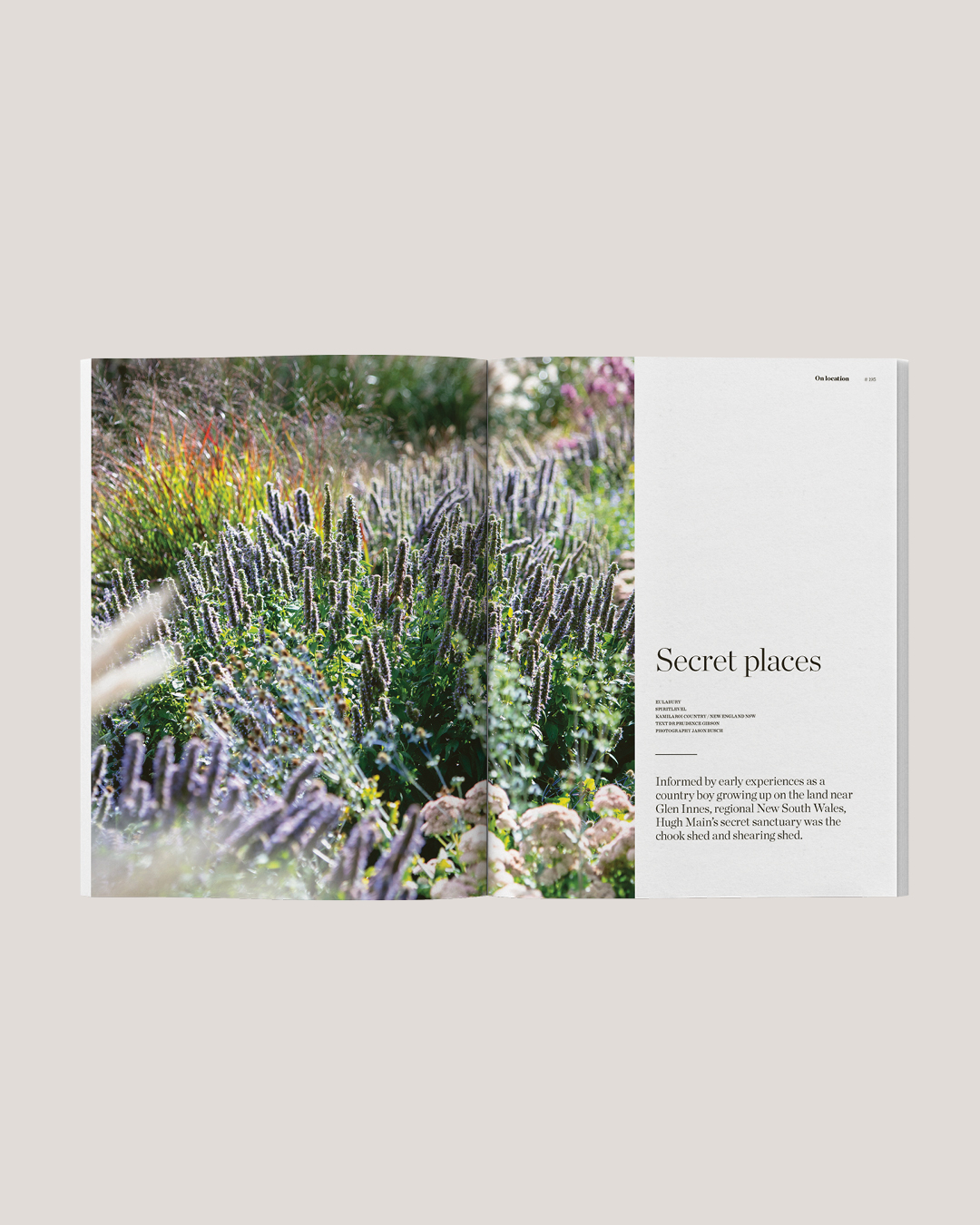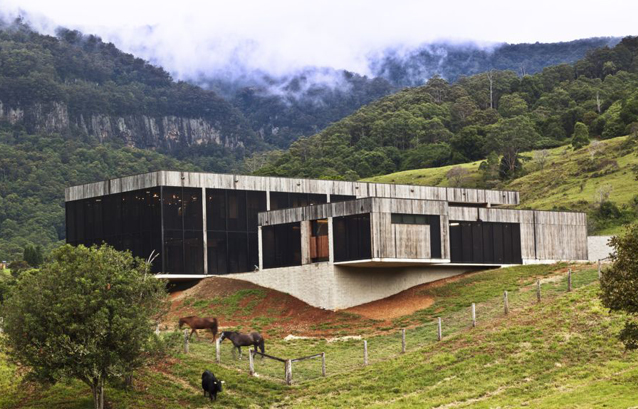Located in Natural Bridge, Queensland, the project’s concept was guided by the client’s desire to incorporate natural, passive climate control, low VOC, low maintenance materials and to isolate indoor and outdoor spaces from insects. Aesthetically the brief was for simplicity and minimalism, to create an understated dwelling that complements the landscape.


Functionally this was achieved by creating two layers in the structure – an inner, liveable glass box, articulated to control prevailing breezes and access extensive views, and an outer skin of metal insect screens which protect the inner box from insects and fauna. Climate control is achieved through a number of architectural and design elements, including a north-aligned linear plan, habitable spaces clustered to promote cross-ventilation, use of high thermic mass materials, glazing and curtains. Of particular note are the 36 metres of glass louvres on the northern overhang; set to a fixed gradient of 38 degrees these allow direct sunlight to permeate the terrace and living areas in winter months while, due to the sun’s changed position, shading them in summer months.

In reference to the rugged stone outcrops that dot the surrounding valley the building’s main external cladding material is locally-sourced ironbark. Left rough-sawn and untreated the timber’s grey tone and natural colour variations are faithful to the palette of the landscape while giving the building a textured, organic finish. As architect Paul Robertson comments, “Traditionally, many historic buildings within the region are constructed predominantly of locally sourced, untreated, rough-sawn hardwood. Many such rural structures are still evident within the surrounding rural countryside. This building pays respect to the durability and appropriateness of this inherent native material.”

Internally the home is a series of large, open volumes composed from a restricted range of materials. Local hardwoods are used extensively, giving surfaces warmth and timbre, while steel, natural stone and concrete in tones of off-white and black maintain the minimalist, unornamented aesthetic, further sustained by spare furnishing and concealed built-ins.



Photography: Scott Burrows

